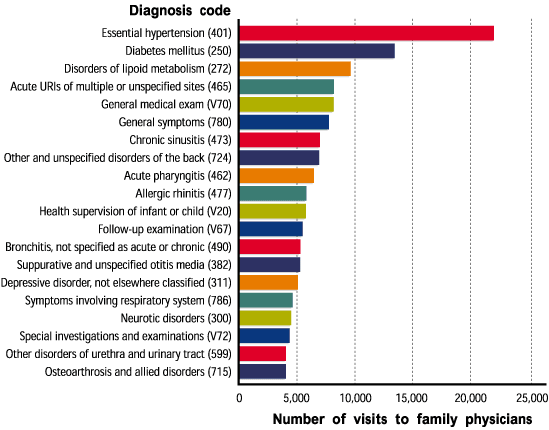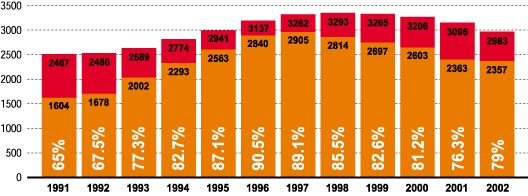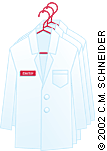
Fam Pract Manag. 2002;9(5):26-29
HIPAA privacy rules await proposed changes
The U.S. Department of Health and Human Services (HHS) has proposed a series of changes to the federal privacy rules that are scheduled to go into effect in April of 2003 as part of the Health Insurance Portability and Accountability Act (HIPAA). The proposed changes would eliminate a requirement that physicians, other providers and insurers obtain written consent from patients before beginning treatment or making payments related to their care. Instead, patients would simply need to be notified about their privacy rights and the entity’s privacy practices.
The privacy rules would continue to apply to oral communications as well as written and electronic communications and would limit the use of patients’ personal health information to the “minimum necessary”; however, the proposed rules would explicitly allow treatment-related conversations between members of the patient’s health care team. The proposed changes would also give parents greater access to their children’s medical records and make it easier for researchers to access patient records.
The one area where the proposed changes would tighten the current privacy regulations is in requiring health care entities to obtain specific permission from patients before using their information for marketing purposes.
At press time, the new privacy rules were not final, pending the results of a 30-day comment period.
The Top 20 in 2000
Hypertension and diabetes topped the list of the most commonly used diagnosis codes in family practice in 2000. The full list is shown below.

Family practice match numbers drop slightly; fill rate goes up
Although the number of medical students matching with family practice residency programs dropped in 2002 for the fifth consecutive year, the drop was slight (only six positions), and the specialty’s fill rate increased by almost 3 percent over last year, according to preliminary data from the National Resident Matching Program (NRMP). Of the 2,983 family practice positions offered this year, 79 percent were filled; 47.4 percent were filled by U.S. seniors, the lowest rate of the last decade.
Despite the increase in the fill rate for family practice, the overall match results continue to show a slight preference for medical specialties versus primary care. Obstetrics/gynecology and anesthesiology each saw fill rates of approximately 95 percent as well as increases in the number of positions filled.

PRACTICE PEARLS from here and there
Increase revenue with improved coding
To ensure that your practice is getting paid for the work it does, take some time each month to examine what claims your carrier has denied and why and to track that data over time. You can do this by reviewing your EOMBs (explanation of Medicare benefits statements) for carrier denial codes. If you identify a trend or a denial that warrants appeal, take swift action to correct the problem.
– Coughlin B. Improve collections and streamline your billing with these four tips. Part B News. Rockville, Md: UCG; March 11, 2002:1–4.
PRACTICE PEARLS from here and there
While they wait
To make your reception area more patient-friendly, try these low- or no-cost tips:
Organize seating into subgroups, rather than long rows of chairs, for a warmer feeling.
Allow some space between chairs so patients don’t feel overcrowded.
Mix incandescent light with fluorescent light to soften the lighting without reducing it.
Instead of using signs or placards to guide patients through your practice, use “landmarks” of big plants or striking artwork to help patients remember their way around your practice.
– Five ways to improve your reception area – now. Physician’s Advisory. Conshohocken, Pa: Advisory Publications; January 2002:5.
High marks for health care
Nearly 83 percent of adults who received care at a doctor’s office or clinic in 2000 experienced no problems receiving the care they or their doctor believed was necessary, according to the latest Medical Expenditure Panel Survey, sponsored by the Agency for Healthcare Research and Quality. Eighty-four percent felt that their doctor always or usually spent enough time with them, and 90 percent felt that their doctor always or usually listened carefully to them.
Ask and you shall receive
Nearly a quarter of patients participating in a recent Food and Drug Administration survey said they have asked their physicians for a specific brand-name drug, and 69 percent received a prescription for that drug, reports the April 15 Wall Street Journal. The study’s findings illustrate how direct-to-consumer advertising can influence patients and, therefore, physicians.
Non-MD salaries
Average salaries offered to nurse practitioners, physician assistants and registered nurses in 2001 were $65,000, $62,000 and $43,500, respectively, according to the 2002 Review of Allied Health Care Professional Recruitment Incentives from Allied Consulting. Pharmacists averaged $74,300, while certified registered nurse anesthetists captured the highest average salaries among all allied health care professionals at $118,000.
Dressed to do no harm

Patients prefer their physicians in traditional attire, such as dress pants, dress shoes and white coats with name tags, according to a study of patients seen in dermatological practice settings, published in the April 2002 Archives of Dermatology. Blue jeans, clogs and sandals were ranked the most undesirable. The findings matched similar studies done 20 years ago, despite what the researchers called a “general trend in Western society toward more casual attire in public.”